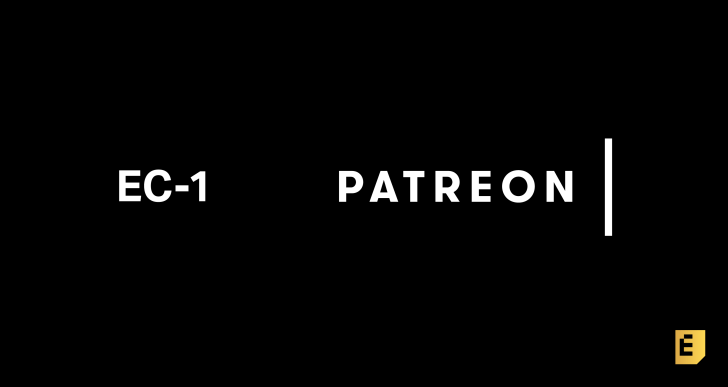TechCrunch is launching a new format for Extra Crunch members, called the EC-1. Modeled after the Form S-1 filing that late-stage startups submit to the SEC as part of the IPO process, EC-1s are authoritative, deep analyses into growth-stage startups.
Through extensive interviews and research, an EC-1 acts as a case study for entrepreneurs and startup executives to learn from a company’s journey as well as a thorough analysis for industry observers and public market investors eager to understand the next big companies.
Patreon is the subject of our first EC-1, which is fitting given the startup’s focus on membership. The company has an interesting backstory for sure, and it has the necessary success accoutrements: it’s raised more than $100 million in venture capital and crossed the $500 million payments milestone.
What really attracted us to Patreon, though, was the profound depth of its strategy. From every angle we looked at, the startup provided a rich and nuanced case study of how to navigate fast-moving consumer and content producer waters, all the while dodging competition from some of the wealthiest companies in the world. It’s had its moments of brilliance and certainly its share of detractors, but the company is engrossing all the same.
TechCrunch media columnist Eric Peckham wrote this EC-1. He conducted dozens of hours of interviews with Patreon’s founders, executive leadership team, and investors as well as with creators, media market experts, and consultants. Plus, he investigated datasets provided by Patreon itself, Graphtreon, and Second Measure. Together, those behind-the-scenes sources provided a profound level of access and nuance about Patreon, and Peckham offers this discerning synthesis. The lead editor for this EC-1 was Danny Crichton, the operations editor was Arman Tabatabai, the copyeditor was David Riggs, and the illustration was designed by Bryce Durbin.
Patreon had no input in the content of this analysis and did not get advanced access to it. Peckham has no financial ties to Patreon or other conflicts of interest to disclose.
The Patreon EC-1 is comprised of six main articles and a bonus reading guide, representing roughly 20,000 words and a reading time of 1 hour and 21 minutes. Read a bit now, and enjoy the rest when you can take it all in. Let’s get started:
- Part 1: Origin Story (2,100 words / 8 minutes) — A look at the hopes and dreams of two founders, the challenges of starting a company, as well as thoughts on fundraising and recruiting.
- Part 2: Product (4,400 words / 18 minutes) — A comprehensive analysis of Patreon’s product strategy and how it has recently refocused on serving creators rather than being a content destination for patrons.
- Part 3: Business (4,900 words / 20 minutes) — A deep dive into the business model, financials, revenues, churn, customer retention, segmentation and other key metrics of Patreon using a wide array of public and private datasets.
- Part 4: Investment Thesis (2,750 words / 11 minutes) — An argument for how Patreon becomes a massive company, exploring the necessary market conditions and steps it will need to take to reach its zenith.
- Part 5: Competition (3,950 words / 16 minutes) — A backgrounder on the myriad threats and competitors targeting Patreon, including social networks like Facebook, vertical subscription platforms, talent agencies, and political controversy.
- Part 6: Reading Guide (2,050 words / 8 minutes) — A bonus annotated guide to the news articles, analyses, videos, and data about Patreon that have been posted in the past and are worth referencing if you would like to research the company further.
- Part 7: The Future and Exit Analysis (2,700 words / 11 minutes) — A final analysis of what the future holds for Patreon, as well as the potential acquirers and the hypothetical math of an IPO.
Patreon is a startup, and so are we here at Extra Crunch. Let us know your feedback! We intend to iterate this EC-1 format more in the coming weeks as we publish the next companies in the series. Let us know what you liked, what you didn’t, and what companies you think we should look at next. You can reach Extra Crunch Executive Editor Danny Crichton at danny@techcrunch.com.
